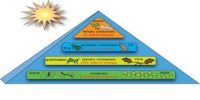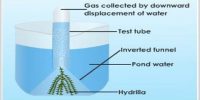Every ecosystem is more or less a self-controlled unit. In nature, the number of a particular living being cannot increase too much. All organisms are interrelated with each other in the form of food and consumers chain. Anyone of these systems cannot be completely eliminated easily. The proportionate number of different level of biotic communities always remains more or less unchanged.
In spite of various changes in the environments, the natural balance is maintained for a long time. By some reason, if the number of a particular animal of a place increases, the number of other living beings of that ecosystem will change in such a manner that the balance of the number of other living beings is maintained. If it is discussed with the example, it will be easy to understand. Suppose in a forest, tiger, deer, cows, pigs etc. live. Deer and pig are the foods of tigers. If the number of deer and pigs increase, the tiger will have the enormous quantity of food and consequently, the tiger Production will increase and if the number of tiger’s increases, the large number of deer and pigs will be killed, as a result, the number of deer and pigs will be decreased.
This will cause a birth of food for tigers and the number of tigers will be decreased. On the other hand, if the number of tiger decreases the number of deer and pigs will increase. In this way, through decrease and increase of different animal population of the ecosystem of an area is automatically controlled.














